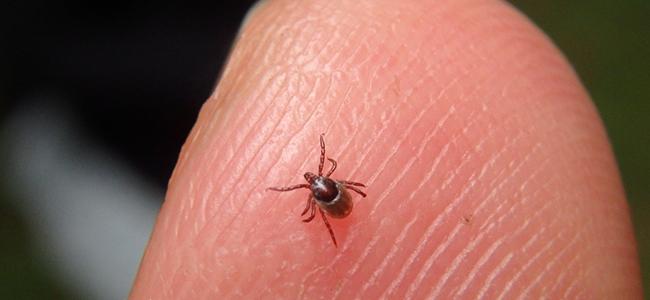
The Best Tick Control For Maryland Properties
10/01/2021
In Maryland, we have some of the most enjoyable weather (for most of the year) for playing out in the yard and enjoying time with our pets. Unfortu...
READ MORE >
Several tick species can be found throughout all of Maryland, the District of Columbia and Northern Virginia. Although not one species is more prevalent than the other, it has been scientifically proven that the Deer tick is singularly responsible for transmitting Lyme disease to more than 300,000 individuals each year. According to the Centers for Disease Control and Prevention, the majority of reported Lyme disease cases occur in the Northeast and Midwest areas of the U.S. While several tick species are home to DC, Maryland and Virginia, we've made a list of the top four culprits that you are most likely to encounter this fall.
1. The American dog tick:
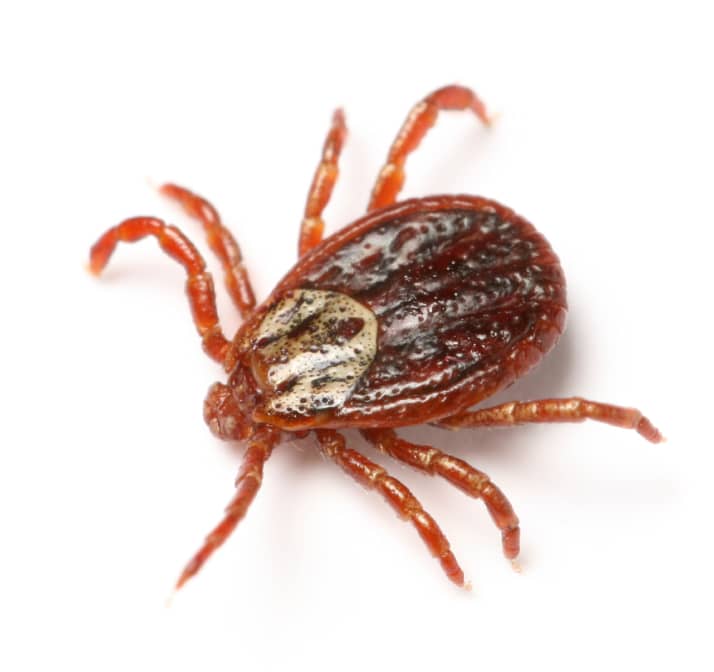
The American dog tick, like its name suggests, is most commonly found on dogs and larger wildlife such as deer, cows and horses. The female of this large tick species is reddish-brown in color with a distinctive “shield” appearing behind the head. It typically ranges in size from 3.5 to 5 millimeters, but can engorge after a blood meal to 15 millimeters in length, or about the length of a staple. This tick species is primarily known for transmitting Rocky Mountain spotted fever (RMSF), tularemia, and canine tick paralysis. Dog ticks are usually active in Maryland between April and October.
2. The Black-legged tick (also called the Deer tick):
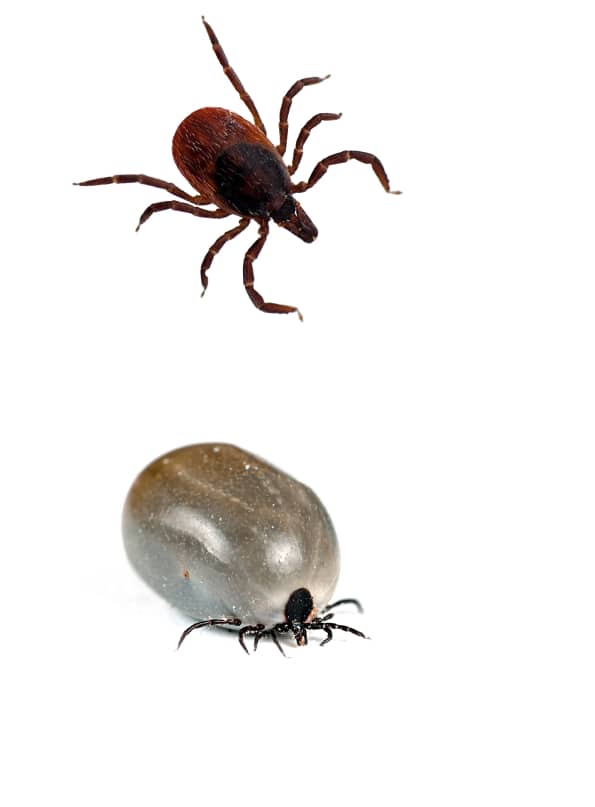
The Deer tick is one of the smaller tick species known to the Mid-Atlantic region. Its occurrence in wooded areas, especially those roamed by wildlife, is high. The adult tick is approximately 3 millimeters in length and appears dark-brown to black in color, with females appearing reddish behind the “shield.” Deer tick nymphs are responsible for increasing numbers of Lyme disease cases in adults and children across the region. Transmission of the bacterium known to cause the disease will generally occur after an infected tick feeds on its human host. This typically occurs when Deer tick nymphs (young ticks, usually no larger than a pinhead) remain undiscovered on the body for 24 hours or more. While adult Deer ticks are fully capable of transmitting Lyme disease, they are more readily discovered and removed from the body before transmission occurs.
3. The Lone star tick:
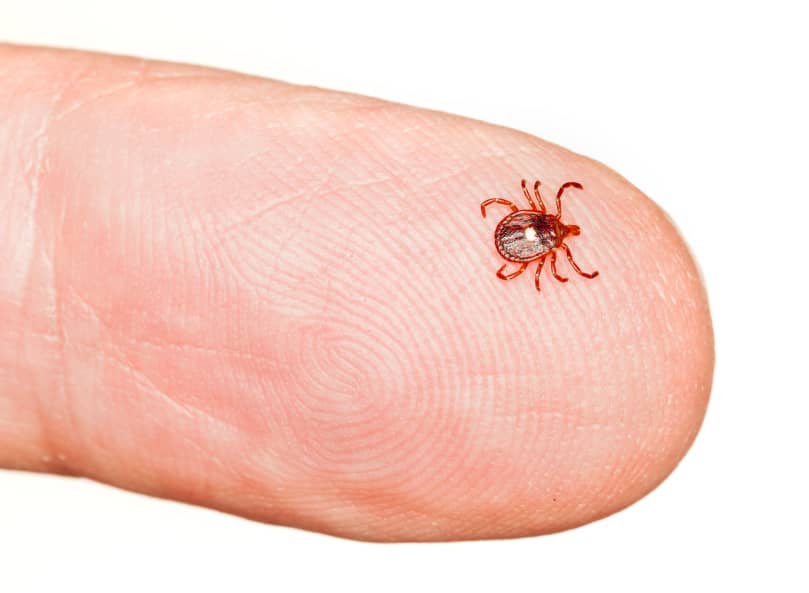
The Lone star tick is also found throughout D.C., Maryland and Northern Virginia. The adult tick is brown in color with characteristically long mouthparts and can range between 3 and 4 millimeters in length. The female Lone star tick also exhibits a distinctive, silvery-white dot in the middle of the back. Although this tick species is not known to carry the disease pathogen that causes Lyme disease, it has been reported that it is capable of transmitting other illnesses to humans, pets and wildlife.
4. The Brown dog tick:

The Brown dog tick is a unique species, often found in homes and kennels, and is known to cause illness in dogs. It is recognized by its elongated body shape, red-brown color and hexagon-shaped head. Brown dog ticks primarily feed on dogs and many will complete their entire life cycle (from egg to adult) indoors. Infestations that are quickly identified can usually be successfully treated, as long as the dogs do not bring new ticks into the structure.
How to remove a tick
We thought it would be important to address the appropriate removal of a tick from a person or a pet. If the tick has attached itself, do not panic. You will need a pair of tweezers, cotton balls or sterile gauze and some rubbing alcohol or soap and water.
What is Lyme disease?
Lyme disease is a bacterial infection that manifests in humans up to several weeks after a tick infected with the bacteria Borrelia burgdorferi (B. burgdorferi) has bitten its host. While it's important to know that many people who are bitten by a tick may not get the disease, those that do will generally develop flu-like symptoms in the days or weeks following the incident. In some cases, but not all, a rash may appear in the shape of a bulls-eye on the skin around the area of the bite. Without proper diagnosis and treatment, Lyme disease can lead to heart problems, several muscular and cognitive ailments, as well as partial paralysis.
If you have questions about ticks or any other creepy crawlies giving you the heebie-jeebies, just send us a message and we'll set ourselves to the rescue!

10/01/2021
In Maryland, we have some of the most enjoyable weather (for most of the year) for playing out in the yard and enjoying time with our pets. Unfortu...
READ MORE >

09/03/2021
Healthcare facilities, such as hospitals, nursing homes, rehabilitation centers, and emergent care centers must maintain a strict level of sani...
READ MORE >

08/23/2021
Ticks are considered to be some of the most dangerous arachnids around. Not only are they famous for biting people, pets, and wildlife creatures, b...
READ MORE >
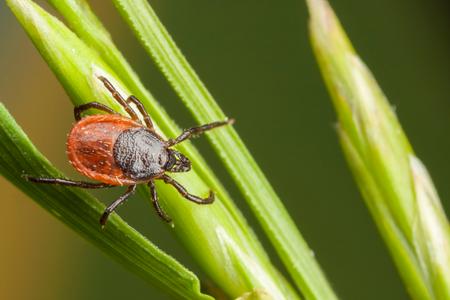
07/15/2021
Each year, tick populations are on the rise. This is due to a multitude of factors, including climate change and increased tick habitat. Frederick ...
READ MORE >

Protect your home and family from nuisance and potentially damaging pests with a Preferred Care home pest control plan. Starting at $49/month

Don't let the bed bugs bite a second longer. Contact American Pest for the most comprehensive bed bug control in the industry. Learn More

Our certified rodent control pros will put an end to your frustration by getting rid of rats and mice inside your home. Learn More

Say goodbye to wood-destroying termites in your home when you contact American Pest for expert termite control. Learn More

Trust American Pest to deliver professional backyard tick control services that are guaranteed to get results. Learn More

Don't spend the warm-weather season indoors, find out how American Pest's professional treatments get rid of mosquitoes. Learn More
Fill out the form and recieve feedback in less than 5 minutes. For immediate service please call.